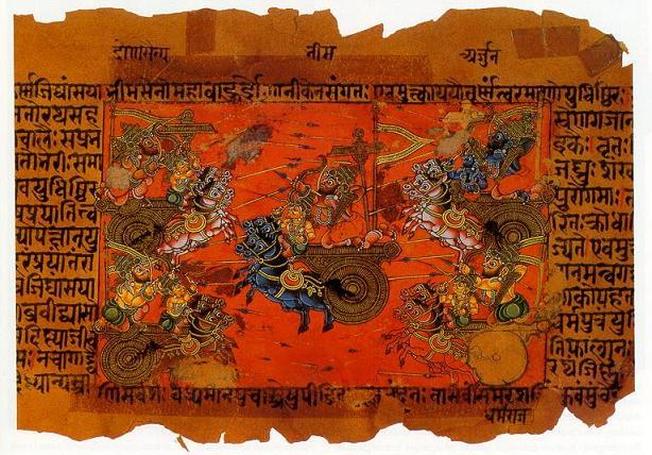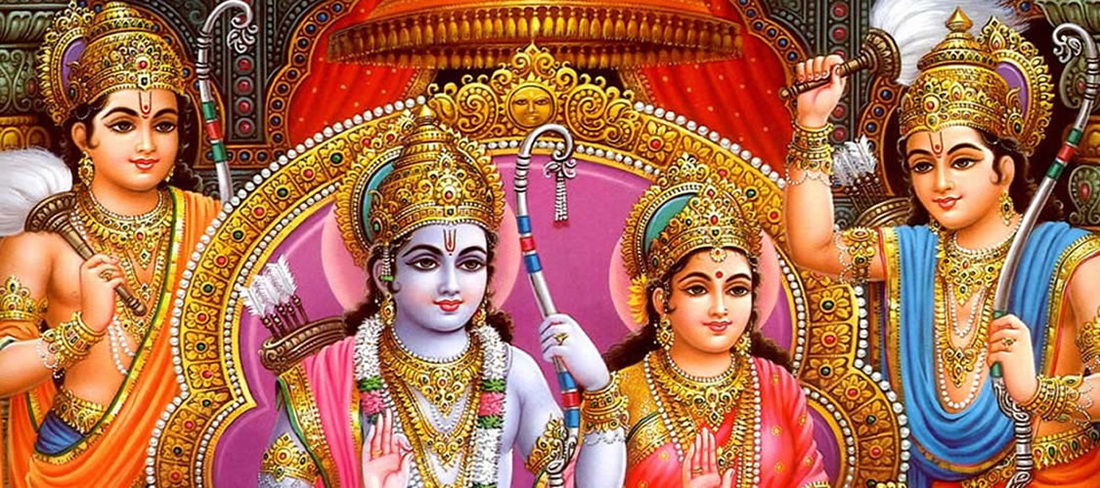Classical India Epics
Epics, or a Mahakavya, are known as the specialty of Sanskrit and are also the earliest forms of literature. Indian literature is thought to be the earliest literature of the world. Literature during this time largely incorporated art. In this art, the gods portrayed in the story were depicted and it was grandiose. The art was very detailed and included humans, animals, scenery, color and much more. The two most famous epics are the Mahabharata and the Ramayana. Classical epics were made by using parts of the two original epics. An epic is supposed to be divided into chapters, or Sarga. Every chapter is composed in an individual and specific manner depending on the subject or theme of the Sarga. Epics are thought of as art as much description is provided besides the main plot. Imagery is widely used to describe festivals, forests, mountains, seasons, and so on. Stanzas are composed so they flow with the story line but are also an individual idea or image.
The two classical epics have to do with ideals and values of human civilization. The epics highlight the value of truth and the importance of self-sacrifice. Epics have many moral teachings and are sacred writing to Hindus because of the important discourses and teaching included in them. Although they are originally written in Sanskrit, they were performed orally before transferring epics into writing. Tellers of the stories add and take out parts and pieces of the story and the epics area changed a bit when translated as well. The main ideas and morals remain intact even if small details of the epics do change.
The two classical epics have to do with ideals and values of human civilization. The epics highlight the value of truth and the importance of self-sacrifice. Epics have many moral teachings and are sacred writing to Hindus because of the important discourses and teaching included in them. Although they are originally written in Sanskrit, they were performed orally before transferring epics into writing. Tellers of the stories add and take out parts and pieces of the story and the epics area changed a bit when translated as well. The main ideas and morals remain intact even if small details of the epics do change.
Mahabharata

The Mahabharata is a famous Indian epic written by Ved Vyasa and is the longest Sanskrit epic ever written. The epic has more than 74,000 verses and 18 books. The story is set in India is about the conflict of a family, the Pandavas and the Kauravas. The two sides of the family have a dispute over who is to rule the kingdom but the Kauravas are exiled after losing a game of gamble. Later on, they come back and have a war. Krishna is a great part of the story as he helps Arjuna drive his chariot. Another very important part of the story is the conversation that Arjuna and Krishna have about the Bhagawad Gita. Krishna gives Arjuna a glimpse of his divine self and reminds Arjuna that he must fulfill his destiny in life. The Pandavas won the battle and ruled over Hastinapura for many years. The epic talks about the importance of fulfilling one’s dharma in life. Other important teachings of the epic are about lies, deceit, and other vices. The prevailing theme of the story is that good always triumphs over evil. It also portrays ancient politics and how a person can let go of his or her principles for selfish desires.
Ramayana
The Ramayana is the most famous and read epics of all times. Maharshi Valmiki is the author of the epic. The Hindus have such high respect for this epic, that it is considered a holy book. All children in India know the story of the Ramayana and it holds important values as well as idealistic principles. There are many local versions written and printed across India. The Ramayana takes place in the kingdom of Ayodhya where there was a noble king, Dashratha. He has three wives and was granted four sons. The eldest son was Rama and because of his values and outlook, he was considered the seventh incarnation of Lord Vishnu. The king was going to crown Rama but his second wife became jealous and wanted her son named king after a promise the king had made her. Her son was named king and Rama was exiled for fourteen years. He set out with Sita and Lakshmana but one day, a Demoness saw Rama and was charmed by his personality. She tried seducing him but Rama ignored her and so she tried seducing Lakshmana. Lakshmana was disgusted and mad so he cut off her nose. The Demoness went to her brother Ravana, the Demon king to complain about what happened. Ravana abducted Sita so they must find her. In the end, Rama wins and they go back to the kingdom where he is now crowned. The moral of the epic is that good triumphs over evil, and the values highlighted are the ones demonstrated by Rama.
Sophia Gonzalez Mayagoitiahttp://kumarparal.hubpages.com/hub/FAMOUS-EPICS-TOP-10-INDIAN-EPIC-POEMS-OF-ALL-TIME
http://www.iloveindia.com/literature/sanskrit/indian-epics/ramayana.html
http://www.knowledgecommission.org/classical-indian-epics.html
http://edsitement.neh.gov/lesson-plan/lessons-indian-epics-following-dharma
http://www.iloveindia.com/literature/sanskrit/indian-epics/ramayana.html
http://www.knowledgecommission.org/classical-indian-epics.html
http://edsitement.neh.gov/lesson-plan/lessons-indian-epics-following-dharma


